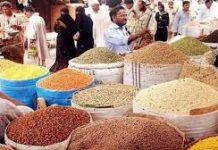Agriculture Desk
Pulses, also known as legumes, are the edible seeds of leguminous plants cultivated for food. Dried beans, lentils and peas are the most commonly known and consumed types of pulses.
Staples dishes and cuisines from across the world feature pulses, from hummus in the Mediterranean (chick peas), to a traditional full English breakfast (baked navy beans) to Pakistani daal (peas or lentils).
Pulses do not include crops that are harvested green (e.g. green peas, green beans)—these are classified as vegetable crops. Also excluded are those crops used mainly for oil extraction (e.g. soybean and groundnuts) and leguminous crops that are used exclusively for sowing purposes (e.g. seeds of clover and alfalfa), according to Food and Agriculture Organization (FAO).
Why are pulses important crops?
1)Nutritional value
They are packed with nutrients and have a high protein content, making them an ideal source of protein particularly in regions where meat and dairy are not physically or economically accessible. Pulses are low in fat and rich in soluble fiber, which can lower cholesterol and help in the control of blood sugar. Because of these qualities they are recommended by health organizations for the management of non-communicable diseases like diabetes and heart conditions. Pulses have also been shown to help combat obesity.
2)Food security
For farmers, pulses are an important crop because they can both sell them and consume them, which helps farmers maintain household food security and creates economic stability.
3)Environmental benefits
The nitrogen-fixing properties of pulses improve soil fertility, which increases and extends the productivity of the farmland. By using pulses for intercropping and cover crops, farmers can also promote farm biodiversity and soil biodiversity, while keeping harmful pests and diseases at bay.
Furthermore, pulses can contribute to climate change mitigation by reducing dependence on the synthetic fertilizers used to introduce nitrogen artificially into the soil. Greenhouse gases are released during the manufacturing and application of these fertilizers, and their overuse can be detrimental to the environment.
Pulses in Pakistan
Pulses are the most important source of vegetable protein in Pakistan. They are cultivated on 5% of the total cropped area. Their use ranges from baby food to delicacies of the rich and the poor. Because of the population growth, demand for pulses is increasing day by day. There is a need to develop varieties with higher yield potential that respond to improved management practices so as to meet the increasing demand of pulses.
Major pulse crops grown in the country are chickpea (Cicer arietinum L.), lentil (Lens culinaris Medic.), mung bean (Vigna radiata (L.) Wilczek), black gram or mash (Vigna mungo L. Hepper) and khesari (Lathyrus sativus L.). There are other summer and winter pulses such as pigeonpea (Cajanus cajan L. Millsp.), Cowpea (Vigna unguiculata (L.) Walp.), moth bean (Vigna aconitifolia (Jack) Merechal), common beans (Phaseolus vulgaris L.) and faba bean (Vicia faba L.). These minor pulses are grown on small areas.
The total area under major pulse crops in Pakistan is about 1.5m hectares. Among these pulses, chickpea is the major winter food legume and mung is the major summer legume. Chickpea occupies 73% of the total pulses area with 76% contribution to the total production, whereas mung bean occupies 18% of total area devoted to pulses contributing 16% to the total pulses production. The black gram and lentil, each are cultivated on 5% of the total pulses area and each of them contributes 5% to the total pulses production.















